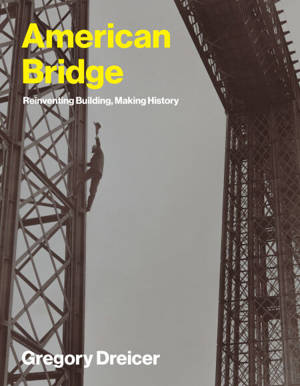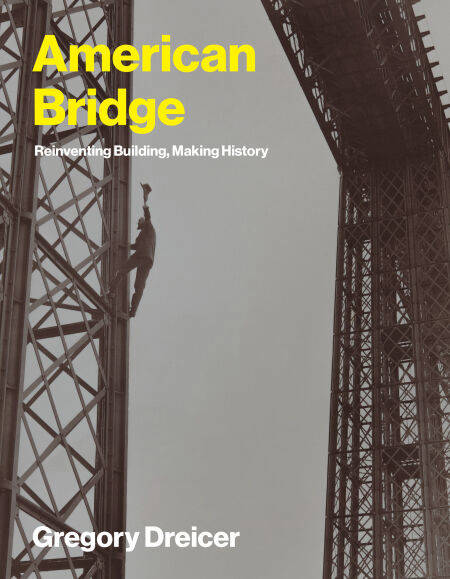
- Afhalen na 1 uur in een winkel met voorraad
- Gratis thuislevering in België vanaf € 30
- Ruim aanbod met 7 miljoen producten
- Afhalen na 1 uur in een winkel met voorraad
- Gratis thuislevering in België vanaf € 30
- Ruim aanbod met 7 miljoen producten
Zoeken
Omschrijving
Why a world-transforming invention remained an untold story—until now.
How did builders shift from the erection of one structure at a time to the mass construction of hundreds of thousands? American Bridge explores a radical reimagining, a new way of building that introduced uniformity and modularity on a global scale while enabling the connectivity essential to the rise of the nation-state. With tales of bygone infrastructure and astonishing images, Gregory Dreicer spans a deep gap in history. He tracks the transnational creative flows that propelled the development of beam, truss, and skeleton frame as industrial essentials, shaped by classical, capitalist, techno-utopian beliefs that still animate engineering and architecture.
Evolutionism and nationalism for two centuries have dictated how innovators, their chroniclers, and all of us view materials, structures, and each other. These perspectives determine what we celebrate and who we forget. Dreicer instead prioritizes bridges over borders and evidence over myth. As a result, American Bridge restores lumber’s role as seminal industrial product. It recognizes the contributions of enslaved Black people at a transformational technological moment. It portrays designers, workers, and managers devising methods of launching long bridges and assembling the tallest of towers. And it invites you to consider the ever-changing meanings of “America.”
How did builders shift from the erection of one structure at a time to the mass construction of hundreds of thousands? American Bridge explores a radical reimagining, a new way of building that introduced uniformity and modularity on a global scale while enabling the connectivity essential to the rise of the nation-state. With tales of bygone infrastructure and astonishing images, Gregory Dreicer spans a deep gap in history. He tracks the transnational creative flows that propelled the development of beam, truss, and skeleton frame as industrial essentials, shaped by classical, capitalist, techno-utopian beliefs that still animate engineering and architecture.
Evolutionism and nationalism for two centuries have dictated how innovators, their chroniclers, and all of us view materials, structures, and each other. These perspectives determine what we celebrate and who we forget. Dreicer instead prioritizes bridges over borders and evidence over myth. As a result, American Bridge restores lumber’s role as seminal industrial product. It recognizes the contributions of enslaved Black people at a transformational technological moment. It portrays designers, workers, and managers devising methods of launching long bridges and assembling the tallest of towers. And it invites you to consider the ever-changing meanings of “America.”
Specificaties
Betrokkenen
- Auteur(s):
- Uitgeverij:
Inhoud
- Aantal bladzijden:
- 420
- Taal:
- Engels
- Reeks:
Eigenschappen
- Productcode (EAN):
- 9780262382649
- Verschijningsdatum:
- 19/01/2026
- Uitvoering:
- E-book
- Beveiligd met:
- Adobe DRM
- Formaat:
- ePub

Alleen bij Standaard Boekhandel
+ 73 punten op je klantenkaart van Standaard Boekhandel
Beoordelingen
We publiceren alleen reviews die voldoen aan de voorwaarden voor reviews. Bekijk onze voorwaarden voor reviews.








